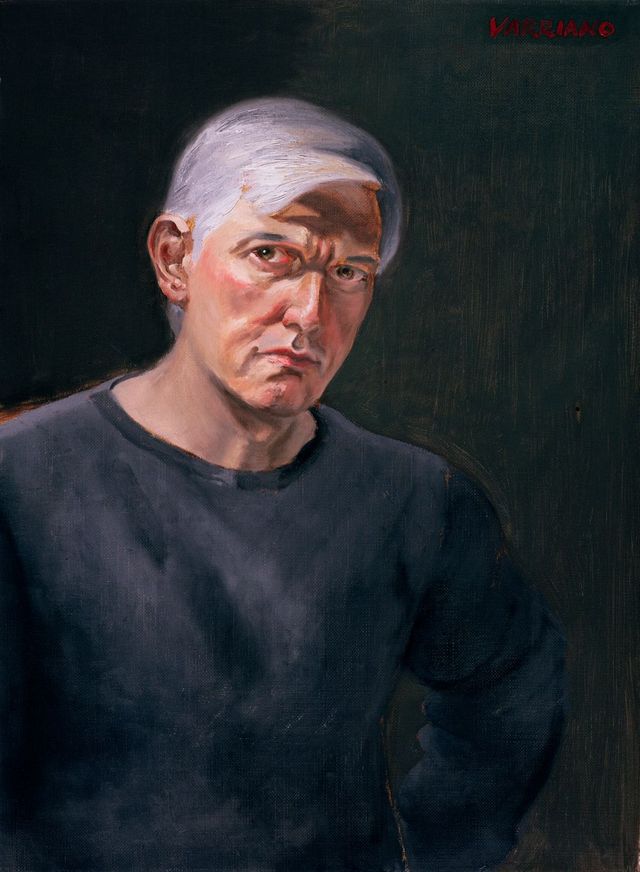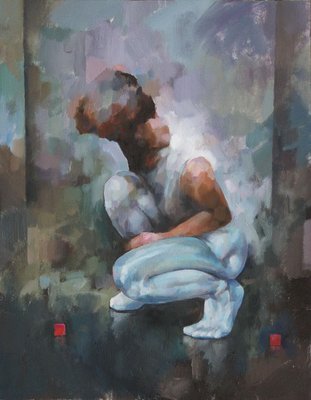The Duty of Feeling and Expression in Metaphorical Oil Paint: A Comprehensive Evaluation of Topic and Composition
The interaction of feeling and expression in figurative oil painting works as a critical lens where one can check out the complex connection between subject issue and make-up. Artists harness different techniques, from shade option to brushstroke dynamics, to grow psychological resonance within their jobs. This nuanced orchestration not just shapes viewer assumption however also welcomes a much deeper inquiry right into how these components coalesce to show the complexities of human experience. As we discover this rich surface, one must consider just how particular case studies light up the wider effects of these creative choices.
Understanding Emotion in Art
Feeling in art functions as an effective avenue for expression, allowing artists to share intricate sensations via their work. In metaphorical oil painting, this psychological depth is often represented with the representation of the human figure, capturing the subtleties of human experience. The choice of subject, shade scheme, and brushwork all add to the emotional resonance of an item.
Artists regularly bring into play personal experiences, social problems, or universal themes to stimulate sensations in the customer. For circumstances, a portrait might show vulnerability, while a dynamic figure in movement can represent freedom or turmoil. These emotional strings link the customer to the artwork, promoting a discussion that goes beyond the aesthetic medium.
Additionally, the interaction in between light and shadow can intensify psychological intensity, leading the visitor's gaze and accentuating particular components within the make-up. Using texture in oil paint better includes layers of intricacy, welcoming a tactile action that boosts the emotional experience. Overall, understanding feeling in art is crucial for appreciating the nuances that identify metaphorical oil painting, as it changes plain representation right into a profound expedition of the human problem.
Key Aspects of Structure
In the world of metaphorical oil paint, the make-up works as the underlying structure that organizes visual aspects and boosts the emotional story. Crucial components of make-up include balance, comparison, centerpiece, and rhythm, each adding to the total impact of the art work.
Balance refers to the circulation of visual weight within the painting, which can be accomplished through symmetrical or unbalanced arrangements. A healthy structure provides stability, allowing the visitor to engage with the item harmoniously - figurative oil painting. Contrast, on the various other hand, involves comparing different aspects, such as light and dark or warm and awesome shades, to guide the visitor's eye and evoke psychological reactions
The focal point is critical, as it guides focus to the most substantial part of the paint, often highlighting the psychological core of the narrative. With techniques like shade saturation or positioning, artists can highlight this area successfully. Lastly, rhythm concern the repetition of aspects, creating a feeling of movement and flow throughout the make-up. By masterfully incorporating these crucial elements, musicians can craft psychologically resonant and compelling figurative oil paintings that mesmerize and engage their audience.
Subject Matter and Its Impact
Subject plays a critical duty in metaphorical oil painting, as it not just serves as the foundation for the narrative however also forms the audience's interpretation and emotional interaction with the art work. The choice of subject-- be it a singular number, a group dynamic, or a thematic representation-- straight affects the emotional environment shared to the target market.

For instance, portraits usually evoke personal connections, exposing the ins and outs of human expression and character, while scenes showing public tasks can develop a feeling of belonging or fond memories. The historical and cultural context of the subject issue enhances the audience's understanding, motivating much deeper representations on social norms, values, and the human problem.
Various subject matters additionally generate varying levels of interaction; a dramatic conflict shown with figures in stress may elicit feelings of stress and anxiety or compassion, while calm landscapes can invoke tranquility and contemplation. Inevitably, the impact of topic in metaphorical oil paint is profound, as it offers as a channel for emotional resonance, directing the viewer's action and interpretation, and fostering a link in between the official site artwork and the onlooker. This interaction is vital for the successful communication of the musician's intent.
Methods for Stimulating Sensations
The effectiveness of metaphorical oil paint in sharing emotions is substantially influenced by the methods utilized by the artist. One of the most important methods is the usage of color concept, where the strategic choice of shades can stimulate specific emotional actions. Cozy shades, such as oranges and reds, commonly elicit feelings of enthusiasm or aggression, while cooler tones like blues and eco-friendlies often tend to evoke calmness or unhappiness.
One more necessary method is the control of light and darkness, called chiaroscuro. This technique boosts the three-dimensionality of numbers, developing significant contrasts that can magnify psychological deepness. The positioning of light can guide visitors' feelings, highlighting details aspects of the structure.
Brushwork also plays a vital role; loose, expressive strokes can share energy and spontaneity, whereas smoother methods may suggest tranquility or precision. Furthermore, the arrangement of subjects within the make-up can affect emotional influence. Close distance can recommend intimacy, while range may suggest isolation.
Inevitably, the mix of these strategies allows musicians to craft narratives that reverberate with the audience, transforming a plain visual experience into an evocative psychological journey. - figurative oil painting

Situation Research Studies of Notable Functions
Analyzing notable jobs of figurative oil paint exposes just how various strategies are employed to evoke powerful emotions. One exemplary case is Edvard Munch's "The Scream," where the altered number and swirling background convey existential dread. Munch's use color-- deep blues and brilliant oranges-- escalates the psychological influence, showcasing how combination selections can shape customer experience.
Another substantial job is Pablo Picasso's "Les Demoiselles d'Avignon." Here, strong brushstrokes and fragmented kinds reflect a tumultuous psychological landscape, testing typical depictions of the female number. Picasso's cutting-edge structure not only catches the viewer's attention yet also invites contemplation on styles of identification and sexuality.
In Addition, Frida Kahlo's "The Two Fridas" offers a touching expedition of duality and self-identity. The contrasting figures, view publisher site linked by a shared heart, exhibit Kahlo's psychological depth and individual story. figurative oil painting. Her precise focus to detail and symbolic aspects offer to involve audiences on a natural level
These study emphasize the profound connection between feeling and make-up in metaphorical oil painting, revealing just how musicians harness Your Domain Name method to connect complex feelings and narratives that reverberate across time and society.

Verdict
Finally, the interaction of emotion and expression in figurative oil painting significantly boosts the audience's experience and interpretation of the artwork. Via a cautious choice of subject and compositional techniques, musicians share profound stories that resonate on both individual and global levels. The application of shade brushwork, theory, and chiaroscuro more enhances psychological depth, transforming each canvas right into a powerful reflection of the intricacies of the human experience.
In metaphorical oil painting, this psychological deepness is usually portrayed via the representation of the human number, catching the subtleties of human experience.Moreover, the interplay in between light and shadow can intensify psychological intensity, assisting the customer's gaze and drawing interest to particular aspects within the composition. The usage of structure in oil paint even more adds layers of intricacy, inviting a responsive response that boosts the emotional experience.The focal point is crucial, as it guides attention to the most significant part of the painting, commonly highlighting the psychological core of the narrative. Inevitably, the impact of subject issue in figurative oil paint is profound, as it offers as a conduit for emotional resonance, directing the audience's action and analysis, and cultivating a link in between the onlooker and the artwork.